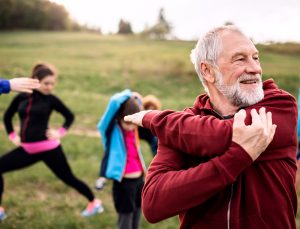Nearly one in three adults is at risk of severe health problems, not because of some virus but due to a lack of movement.
An alarming new study reveals that 1.8 billion adults worldwide – 31% of the global adult population – are falling short of recommended physical activity levels. Even more shocking? This number has jumped by 5 percentage points since 2010, and experts warn it could hit a staggering 35% by 2030 if the trend continues unchecked.
According to Dr. Tedros Adhanom Ghebreyesus, WHO Director-General, we are facing a silent pandemic of inactivity, which is increasing the risk of cancer, heart disease, and mental health conditions.
THE STATUS OF INACTIVITY CRISIS AROUND THE WORLD
A study in The Lancet Global Health highlights the growing global risk of physical inactivity:
High-Income Asia Pacific: 48% of adults fail to meet physical activity guidelines due to urbanization, technological advancements, and sedentary work environments.
South Asia: 45% of adults face the risk of physical inactivity, influenced by cultural factors, economic disparities, and sedentary jobs.
High-Income Western Countries: 28% of adults do not meet activity levels despite better access to recreational facilities and awareness of exercise benefits. Desk-bound jobs and sedentary leisure activities contribute to this rate.
Oceania: 14% of adults are inactive, benefiting from a strong emphasis on outdoor activities and sports.
Adults over 60 are less likely to meet activity guidelines than younger individuals due to health issues, decreased mobility, and lack of social support for physical activity.
This global overview emphasizes the need for public health initiatives to promote physical activity across all age groups and regions and address their unique challenges.
THE PATH TO REDUCING INACTIVITY
Despite the challenges, there’s good news: nearly half of the world’s countries have improved their physical activity levels over the past decade. Even better, 22 nations are on track to meet the global target of reducing inactivity by 15% by 2030. This progress highlights the increasing recognition of the impact of physical activity on health and well-being.
Dr. Fiona Bull, Head of the WHO Unit for Physical Activity, stresses the need for a “whole-of-society approach” to promote physical activity. This extends beyond individual choices to include communities, governments, and various sectors of society. Creating environments that emphasize the impact of physical activity on health is crucial.
This involves urban planning with parks, bike lanes, pedestrian-friendly spaces, workplace wellness programs, and enhanced emphasis on physical education in schools. By making physical activity accessible and integrating it into daily life, we can support healthier and more active populations.
THE ROAD AHEAD FOR IMPROVING GLOBAL HEALTH

So, what’s the prescription for this inactivity epidemic? The WHO advocates for a comprehensive strategy to combat the risk of physical inactivity. This approach involves multiple vital components:
- Strengthening Policies to Promote Physical Activity
Governments and institutions should create and enforce policies encouraging physical activity for all ages. This includes integrating physical education into school curriculums, providing safe exercise spaces, and incentivizing employee wellness programs. Healthcare settings should also include physical activity guidelines to ensure medical professionals promote staying active.
- Investing in Grassroots and Community Sports
Investing in local sports programs can significantly boost physical activity. Funding community sports facilities, organizing local leagues, and offering affordable sports programs help create a culture of activity and inclusivity. These initiatives improve physical health, build social connections, and enhance mental well-being.
- Encouraging Active Recreation and Transportation
Promoting active recreation and transportation is essential. Cities should have infrastructure for walking, cycling, and public transportation. Safe pedestrian pathways, cycling lanes, and accessible parks encourage daily physical activity. Public transportation systems should also promote walking to and from transit stops, integrating physical activity into daily commutes.
The challenge ahead is undoubtedly significant, but the potential rewards are greater: a healthier, more active global population. The benefits of regular physical activity extend beyond individual health, positively impacting public health systems, economies, and overall quality of life. As we face this inactivity crisis, the question isn’t “Can we afford to change?” but “Can we afford not to?”
REFERENCES:
Nearly 1.8 billion adults are at risk of disease from not doing enough physical activity
www.who.int
A. Royden D’Souza is a professional writer with over 5 years of experience in the healthcare industry. He holds an engineering degree and has worked with several brands to meet their content requirements. He is passionate about writing engaging content for healthcare professionals, allied healthcare professionals, and nurses.






